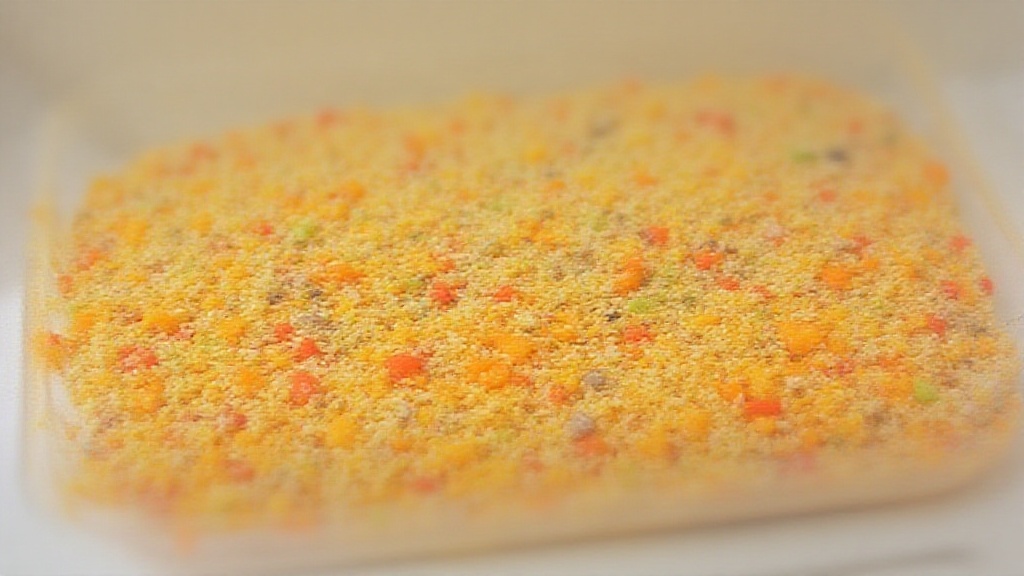
Why Focus on Sustainable Meal Planning?
Over the years, I’ve watched friends jump into crash diets only to fall back into old routines the second the diet ends. Quick-fix plans tend to leave you tired, hungry, and frustrated. The weight often creeps right back. A sustainable meal plan helps you eat in a way that you enjoy while creating steady, healthy progress. No yo-yoing required. Studies show that slower, steady weight loss is more likely to stick because it’s built around habits rather than restriction.
Learning to balance nutrition, daily routines, and real food makes weight loss feel much less like a chore. The meal plan becomes a lifestyle foundation, not a short-term diet. When you focus on habits instead of rules, healthy eating is more likely to fit right in with your day-to-day life. Instead of feeling deprived, you get to discover new foods and find a groove that works for you—making it all feel more natural and even fun.
What Makes a Weight Loss Meal Plan Sustainable?
Being realistic with your food choices is super important. If a plan relies on obscure ingredients, complex recipes, or takes hours to prep each day, it probably won’t last long in the real world. For me, sustainability comes down to these basics:
- Variety: Eating a range of healthy foods keeps meals from getting boring. Think lean proteins, veggies, whole grains, healthy fats, and fruit.
- Satisfaction: The right mix of protein, fiber, and healthy fat helps me feel full, so I’m not raiding the snack drawer by 3 p.m.
- Flexibility: Life isn’t always predictable, so I plan for easy swaps and quick choices for those busy days.
- Enjoyment: Nobody wants bland meals, so I always include flavors I actually like. Yes, seasoning makes a huge difference, and so do sauces and fun add-ons that bring out the best in your ingredients.
In addition to these basics, finding shortcuts and removing guilt from eating make a big difference in the long run. When sustainable meal planning becomes second nature, you have a lot more mental energy for other things in life.
Step-by-Step Guide: Creating Your Own Sustainable Meal Plan
- Figure Out Your Calorie Needs
Most adults looking to lose weight aim for a small calorie deficit. This means eating slightly fewer calories than they burn. Online calculators or guidance from a dietitian can help estimate daily needs. Avoid dropping calories too much, or hunger and low energy will catch up fast. It’s helpful to regularly check in with your energy, mood, and fullness to see if your calorie target still feels right. - Decide on Your Meal Pattern
Most people do best with three square meals per day plus a snack or two. Some like smaller, more frequent meals. I try to listen to hunger cues, but setting basic anchor times for breakfast, lunch, and dinner keeps me from grazing aimlessly or skipping important nutrients. Experiment and see which routine helps you stick to your plan most comfortably. - Choose Protein for Each Meal
Protein is my secret for staying full. That can be chicken, fish, tofu, eggs, Greek yogurt, beans, or lean beef. Just pick something that fits your style and budget. I plan for a protein source with every meal and at least one snack. This also helps build and maintain muscle as you lose weight. - Pile on Veggies
Vegetables are high in volume, low in calories, and they help keep meals colorful. I sneak extra veggies into everything—omelets, stirfries, pasta, salads, and soups. Remember, frozen and canned vegetables are just as nutritious as fresh and can cut down prep time. - Pick Wholesome Carbs
Whole grains like oats, brown rice, wholewheat pasta, and sweet potatoes provide energy and keep things balanced. I use portions that fit my goals, not giant restaurant-size servings. Adding beans and lentils as carb sources is another tasty way to pack extra fiber and nutrients into your meals. - Add Healthy Fats
A bit of avocado, olive oil, nuts, or seeds goes a long way. Fat makes food taste better and helps with fullness, but I keep an eye on serving sizes. Choose whole food sources of fat more often (like nut butter, olives, or tahini) for added nutrients. - Prep and Portion
Meal prepping isn’t about eating the same food every day. Unless you want to! Batch cooking, having leftovers, or even chopping veggies ahead of time saves serious stress during the week. Don’t be afraid to repeat meals that you love or rely on quick fixes like healthy frozen meals when life gets hectic. - Stock Your Kitchen
Keep staples like canned beans, frozen veggies, grains, and easy proteins on hand. This makes it simple to whip up healthy options in a pinch—no more last-minute takeout panic.
Sample Sustainable Weight Loss Meal Plan
It’s pretty handy to see how this looks in practice. Here’s a simple day you could build on or customize based on your likes and lifestyle:
- Breakfast: Scrambled eggs with sautéed spinach and cherry tomatoes, topped with avocado. A side of wholegrain toast.
- Lunch: Grilled chicken salad with mixed greens, cucumbers, bell peppers, chickpeas, a sprinkle of shredded cheese, and a drizzle of vinaigrette.
- Snack: Greek yogurt with berries and a handful of almonds.
- Dinner: Baked salmon with roasted sweet potato and steamed broccoli.
- Optional Dessert: A small piece of dark chocolate or an apple with peanut butter.
Switching up proteins, swapping vegetables, or mixing different grains helps keep things interesting from week to week. You might also mix in a tuna salad, roasted veggie wraps, or even a black bean chili for variety. The goal is balance, color, and staying full—not just restricting yourself to boring meal repeats.
FAQ: Sustainable Weight Loss Meal Planning
What is the 3 3 3 rule for weight loss?
The 3 3 3 rule usually means eating three meals a day, each with at least three different food groups, and lasting this routine for three weeks. It’s just a way to focus on balanced meals and habit building. This method lays a solid foundation for healthy eating patterns that you can actually see yourself sticking with long-term.
What is the 2 2 2 rule for weight loss?
The 2 2 2 rule often refers to eating two servings of protein, two servings of fruits or veggies, and two servings of healthy fats each day. This helps keep meals well-rounded and satisfying, especially when trying to cut calories without feeling deprived. It also encourages more balance across your day and makes it easier to track if you’re hitting your nutrition basics.
Real-Life Examples: Sustainable Eating in Action
- Mix & Match Bowls: One of my favorite hacks is prepping different grains, proteins, veggies, and sauces at the start of the week and mixing them up for lunch bowls and dinner. It’s like building your own “takeout” box, but way healthier. This method keeps me excited to eat my homecooked food all week long.
- Planned Indulgences: Making room for pizza night or a sweet treat here and there helps keep cravings in check and actually makes the plan more enjoyable. No foods are totally “off limits.” You can enjoy favorites without guilt, which supports a healthier relationship with food over time.
Benefits of Sticking to a Sustainable Plan
- Steady weight loss without major hunger or extreme restriction
- Better long-term health, energy, and mood
- Less stress around food choices and fewer last-minute decisions
- Improved cooking confidence and food enjoyment as you try more recipes and flavors
- Empowers you to make mindful choices at home or out, so your healthy habits last—no matter what life throws your way
BONUS
If you want to check out more ways that can help you reach your own personal goals, make sure to follow the link here. This will take you to the rest of my articles, focused specifically on helping you achieve your goals faster by sharing my own personal experience through out the years.

Leave a Reply